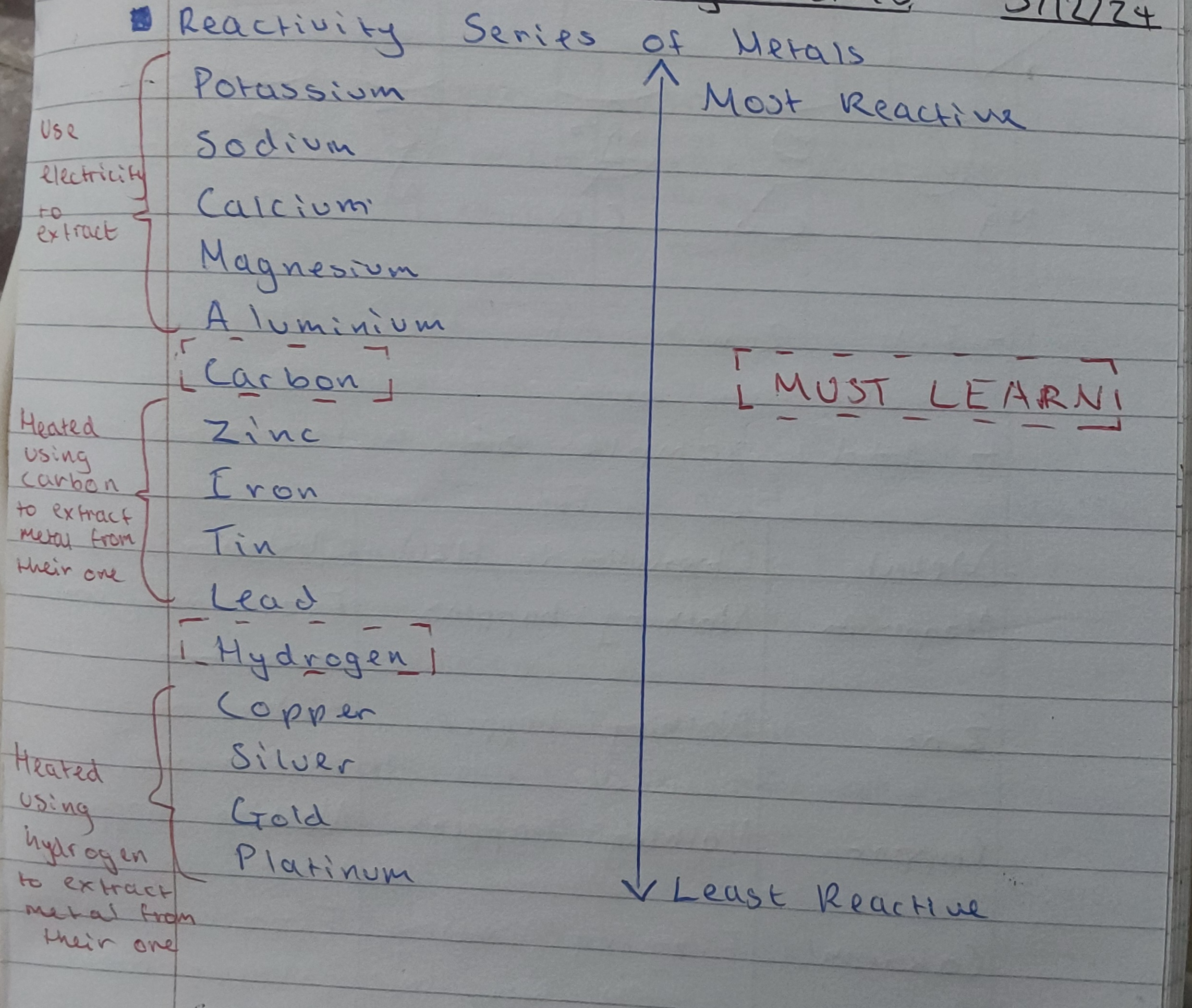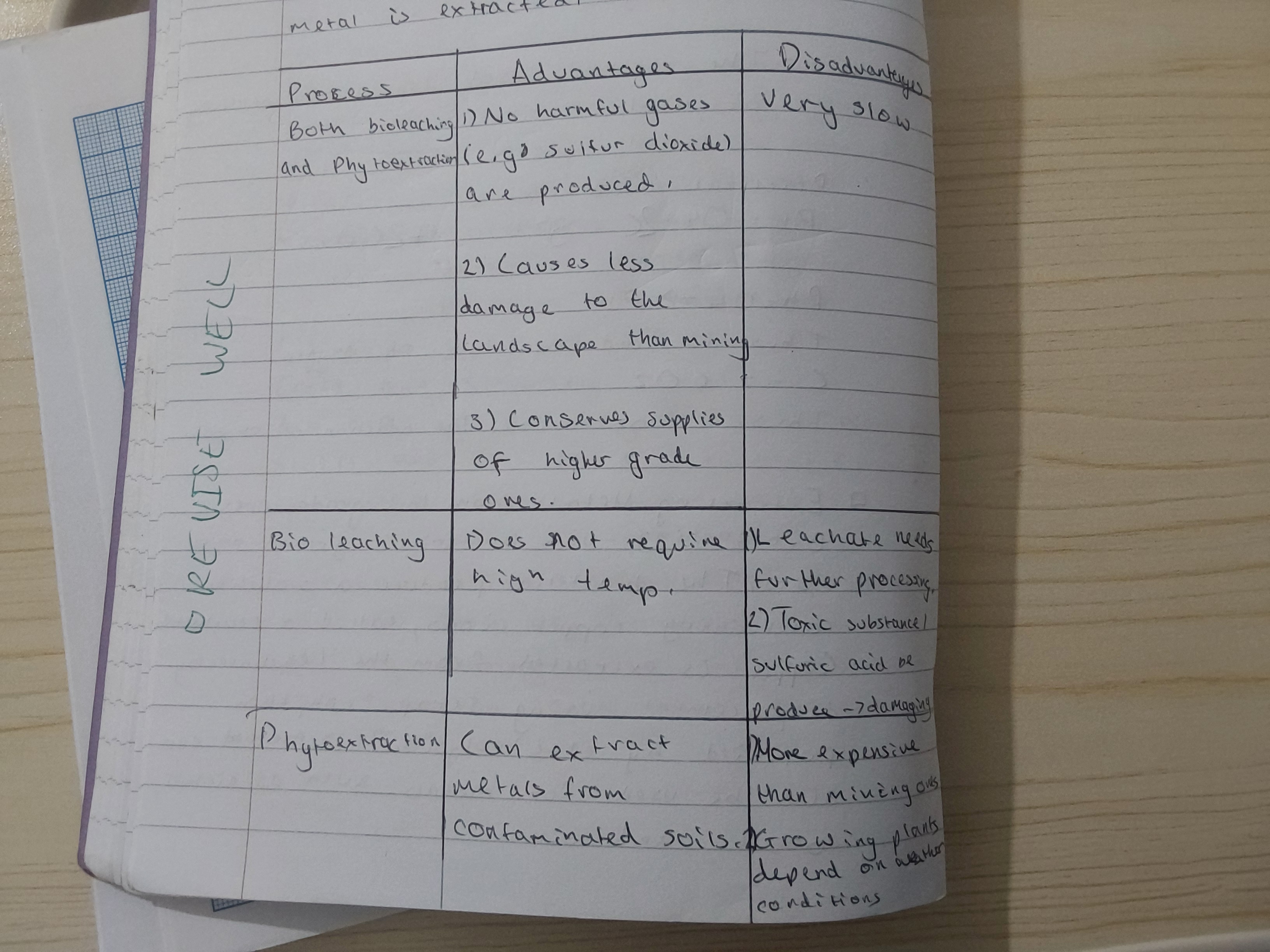Topic 4- extracting metals and equilibria
1/13
There's no tags or description
Looks like no tags are added yet.
Name | Mastery | Learn | Test | Matching | Spaced |
|---|
No study sessions yet.
14 Terms
Deduce the relative reactivity of some metals, by their reactions
with water, acids and salt solutions
Most reactive - react with water
(metal + water = metal hydroxide + hydrogen)
Reactive - react with acid
(metal + acid = salt + hydrogen)
Least reactive - react with oxygen
(metal + oxygen = metal oxide)
4.2 Explain displacement reactions as redox reactions, in terms of gain or loss of electrons
In displacement reactions, both oxidation and reduction takes place.
- Most reactive metal is oxidised. (loses electrons)
- Least reactive metal is reduced. (gain electrons)
what is the reactivity series

how are most metals extracted
from ores found in the Earth's crust
where are unreactive metals found
in the Earth's crust as the uncombined elements
what is oxidation
gain of oxygen
what is reduction
loss of oxygen
what do the extraction of metals involve
the reduction of ores
4.7 Explain why the method used to extract a metal from its ore is related to its position in the reactivity series and the cost of the extraction process, illustrated by
a heating with carbon (including iron)
Ores are reduced using carbon to extract metals.
e.g iron oxide + carbon = iron + carbon dioxide
- Cheaper than electrolysis
(zinc - copper)
4.7 Explain why the method used to extract a metal from its ore is related to its position in the reactivity series and the cost of the extraction process, illustrated by
b electrolysis (including aluminium)
Ores are reduced using electrolysis to extract metals.
e.g aluminium oxide = aluminium + oxygen
- Requires large amounts of energy so very expensive
(aluminium - potas sium)
How to extract metals using biological processes (bacterial and phytoextraction)
Bioleaching/bacterial:
The bacteria produce a solution containing copper ions called a leachate
copper extracted from leachate using displacement using scrap iron then purified by electrolysis
Phytoextraction
involves growing plants that absorbs metal compounds
plants are burnt to form ash from which the metal is extracted

4.9 Explain how a metal's relative resistance to oxidation is related to its position in the reactivity series
The higher on the reactivity series, the least resistant to oxidation (the gain of electrons)
advantages of recycling
ores supplies are finite
prevents waste of metal
use less energy than for extraction
lower use of fossil fuels
less greenhouse gases used
reduced damage to habitats from the mining process
does not end up in landfill
Describe that a life-cycle assessment for a product involves
consideration of the effect on the environment of obtaining the
raw materials, manufacturing the product, using the product